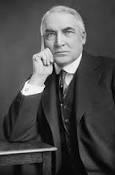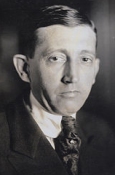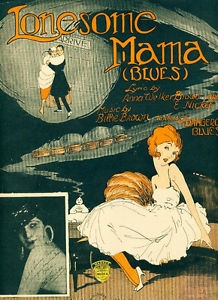
Postage Stamps of the United States - 1923
Politics

President
Jan. 1 - Aug. 3: Warren G. Harding
Aug. 3 - Dec. 31: Calvin Coolidge

Postmaster General
Jan. 1 - Feb. 26: Will H. Hays
Feb. 27 - Dec. 31: Harry S. New

Click Control Above To Hear
1923 "Lonesome Mama"
Postage Rates
Domestic Letter Rate: 2¢ per oz.
Postcard Rate: 1¢
Air Mail Rate: 6¢ per oz.
Stamps
The Regular Stamps First Issued in 1923 - The Fourth Bureaus - Series of 1922
Flat Plate - Perf 11 - 400 Subject Plates - Issued in Panes of 100
Note that the 5¢, 6¢, 11¢, 15¢, 25¢ and 50¢ stamps of this issue were issued in 1922, hence the name of the set: Series of 1922 see also: 1922 Series Identifier

2¢ Washington
First Day: January 15, 1923

4¢ M. Washington
First Day: January 15, 1923

9¢ Jefferson
First Day: January 15, 1923

10¢ Monroe
First Day: January 15, 1923

1¢ Franklin
First Day: January 17, 1923

3¢ Lincoln
First Day: Feb. 12, 1923

$1 Lincoln Memorial
First Day: Feb. 12, 1923

30¢ American Buffalo
First Day: March 20, 1923

$2 Capitol Building
First Day: March 20, 1923

$5 Freedom
First Day: March 20, 1923

7¢ McKinley
First Day: May 1, 1923

8¢ Grant
First Day: May 1, 1923

14¢ American Indian
First Day: May 1, 1923

20¢ Golden Gate
First Day: May 1, 1923

12¢ Cleveland
First Day: May 20, 1923
The Air Mail Stamps of 1923
Flat Plate Perforated 11 - 100 subject plates

De Havilland Propeller
over 6 million issued
FDC: August 15, 1923

Insignia of the Air Mail Service
over 5 million issued
FDC: August 17, 1923

De Havilland DH-4 Biplane
over 5 million issued
FDC: August 21, 1923
The air mail stamps of 1923 were issued to meet rates for a new trans-continental "night and day" flight service. The country was split into three zones, with 8¢ paying the rate for each zone. For example, a letter from New York to San Francisco would be 24¢ since it was carried in all three zones.
Although these stamps were released to the Philatelic Stamp Agency and a handful of Post Offices in August of 1923, they were not regularly issued until nearly a year later, since the new night and day air-mail service for which they had been provided was not yet ready in 1923. First Day covers must be from the August 1923 time-frame and are quite rare. First Flight Covers were issued at the beginning of the next fiscal year, July 1, 1924 and are somewhat more common.
The Commemorative Postage Stamps of 1923 - The 2¢ Harding Memorial Stamp
400 Subject Plates - Flat Plate and Rotary Printings

2¢ Flat Plate Perf 11
1,459,487,085 issued
First Day: Sept. 1, 1923

2¢ Rotary Press Perf 10
99,950,300 issued
EKU: Sept. 12, 1923

2¢ Flat Plate Imperforate
770,000 issued
EKU: Nov. 15, 1923

2¢ Rotary Sheet Waste
Perforated 11 x 11
only 43 examples known
The Harding Memorial stamps mark one of the quickest turnarounds from concept to delivery in the history of U.S. postage stamps. President Harding, the 29th president of the U.S., died of a heart attack on August 2, 1923. Less than a month later a memorial stamp honoring his presidency was issued. Several ideas for this memorial stamp were proposed, including a thirteen cent stamp. However, the Post Office Department decided to issue a new two cent stamp similar in size to the existing 2¢ Washington regular issue, but in a "memorial" black rather than the suggested red of the Universal Postal Union. This stamp was to be issued for a period of 90 days, at which time the P.O.D. would revert to the red 2¢ Washington. Since the decision to issue this stamp was made sometime between August 12 and August 15, it is something of a miracle that the stamp made it to Post Offices by September 1st.
The stamp was issued with possibly more publicity than any stamp that had preceded it, and the public, who viewed Harding as a national hero at the time, some compared him to Lincoln, eagerly purchased the stamp for souvenirs. (Later, Harding lost most if not all of this mystique and was widely regarded as one of our worst presidents. The pendulum is swinging back somewhat in his favor and the verdict is still out concerning his part in the corruption that surrounded his administration.)
How the Bureau of Engraving and Printing managed to print over one and one half billion stamps in 3 months is also something of a miracle. It is possible the haste at which this stamp was produced might be at least partially behind one of the great rarities of 20th century U.S. stamps, the rotary press sheet waste stamp perforated 11x11. The stamp was printed on the rotary presses, but was perforated on the flat plate, perf 11 equipment, rather than with the normal perf 10 perforating machines used to perforate the rotary press stamps of the time. According to the Siegel census. as of 2008, only 43 used singles, a used pair and a recently discovered strip of three are known. The vast majority of these are poorly centered and many have faults, only thirty are sound according to Siegel. Still, all are very collectible, to say the least.
The Sheet Rotary Rarities of 1922 and 1923
During the same time frame, possibly from late 1922 to sometime after August 1923 when the Harding stamp became available, this same "error" also occurred with a few excess one cent rotary sheets, or more likely panes of 100, of both the Washington Franklin one cent stamp and the series of 1922 one cent stamps, both of which had most likely been lain aside during the production process until a sufficient quantity was accumulated to merit perforation. Normally, these rotary sheet stamps would have been perforated 10. The 1922 design one cent rotary stamp, first issued in April of 1923, would have been the ordinary perf 10 rotary stamp, Number 581, but being perforated 11, became the rarest of all regularly issued 20th Century U.S. stamps, with only 13 copies known as of the 2008 Siegel census. All are used and eight have Kansas City, MO cancels. A "PowerSearch" on the Siegel website will show many examples of these "sheet waste" rarities. Just enter 544, 596 or 613 in the "Catalog # equals" box to see the examples.
Rotary stamps can be identified by the size of the stamp. Rotary coil stamps are wider and rotary sheet stamps are taller than their flat plate counterparts. Although the rotary coil waste stamps are somewhat scarce, it is the rotary sheet stamps that are really rare. The exceptionally rare perf 11 rotary stamps can be distinguished by the fact that the design measures at least 22½ mm tall, whereas the common flat plate stamp rarely measures more than 22 mm tall.
There has been some controversy over the years as to whether these stamps were created experimentally, i.e. purposefully, or created accidentally. It does seem likely that salvage sheets were set aside, as is well documented with coil waste sheets, and when enough had been collected, these salvage sheets were given perforations. Gary Griffith's excellent work United States Stamps 1922-26 covers these rarities in depth and brings up an excellent point, "The Post Office Department was also quite sensitive at this time about intentionally creating philatelic varieties, and we have no record, for example, of any premature release of the 11 x 10½ perforations." The latter implying that if the rotary 11 perforations were experimental, there should be examples of 11x10.5 perforations before late 1926 and that is not the case. It makes sense that the rotary sheet waste stamps were created similarly to the way coil waste stamps were created. In fact, for some years, rotary sheet waste stamps were thought by some to be coil-waste stamps. The controversy has subsided and most agree today that these rarities were from sheet stamps and not coil stamps. For more on this, please read the Griffith book.
Do I have a Rotary Sheet Rarity?
The perf 11 rotary sheet waste stamps are among the most misidentified U.S. stamps. As can be seen in the above illustrations, the Harding rotary stamps do not have the sharp clean look of the flat plate printings. It is possible the reason for misidentification of this stamp is the fact that the measurements are very tiny, a fraction of a millimeter or two here or there and a common stamp becomes a rare one. Compound this with the fact that no two people use a ruler identically, and you have a recipe for disaster. That is why the template method can not be overemphasized (see: printing methods for more on using a template). Another template method for those who do not wish to cut a stamp in half, is to simply scan a known flat plate side-by-side with the candidate rotary sheet stamp. Bring up the scan in your photo editor and copy and paste the left (or right) half of the normal stamp over the candidate. If the candidate is noticeably taller than the normal one, then you might have a rotary sheet waste stamp. There are other considerations, but if the perforations appear to be genuine it is certainly worth submitting the stamp for certification - an absolute necessity if you think your stamp might be a rare rotary sheet waste candidate.
The 613 illustrated above is from the Argentum Sale: Robert A. Siegel Auction Galleries, Inc. February 23 1999. A complete census of all known existing copies of this rare stamp is available on the siegelauctions.com website. If you suspect you have a 613, please take a look at the Siegel census. Pay particular attention to the color scans, for example CAN-07 and CAN-08 which show the "fuzzy look" much clearer than the black and white photocopies.
More on the Harding Memorial Stamp of 1923
The common flat plate stamp, perforated 11x11, is still quite plentiful, since so many were saved as souvenirs by collectors and non-collectors alike. At least one sheet of the flat plate stamp was issued imperforate, something that would have been a great rarity, if not for the Post Office issuing the stamp in imperforate sheets two months later to satisfy collector demand for the newly discovered imperforate stamp. The original sheet could have been distinguished from the later imperforates by the plate number, but it was broken up and sold as singles which are now indistinguishable from their original counterparts. The plate block was kept intact however, and is still highly collectible.
One would think the imperforate stamp would bring something of a premium, with production numbers of a mere 770,000, only slightly higher than the two cent Lincoln blue paper of 1909 at 637,000 stamps. Yet the 611 imperforate can be had quite reasonably, again because so many people saved sheets of this stamp thinking it would be valuable someday. On the other hand, the privately perforated variety of this stamp, with Schermack Type III perforations, does bring a nice premium, and a copy on cover with the Schermack Type III perforations is quite scarce.
The 2¢ Harding of 1923 also marked a beginning for collectors of First Day Covers with the appearance of George Linn's cacheted cover, the first modern cachet.
The following postage stamp varieties were first issued by the U.S. in 1923
No new varieties of U.S. Special Delivery stamps were issued in 1923
No new varieties of U.S. Postage Due stamps were issued in 1923
Ordinary issue
Flat Plate - Perf 11 unless otherwise noted - Designer: Claire Aubrey Huston
Number 511 - 11¢ Franklin w/compound perfs 10x11 - EDU: 10/6/23
Number 552 - 1¢ Franklin - FDC: 1/17/23 - Engravers: Marcus Baldwin (vignette) - Edward M. Hall and Joachim C. Benzing (lettering)
Number 552a - 1¢ Franklin Booklet (pane) - First Day: 8/11/23
Number 554 - 2¢ Washington - FDC: 1/15/23 - Engravers: Marcus Baldwin (vignette) - Edward M. Hall and Joachim C. Benzing (lettering)
Number 554c - 2¢ Washington Booklet (pane) - First Day: 2/10/23
Number 555 - 3¢ Lincoln - FDC: 2/12/23 - Engravers: George F. C. Smillie (vignette) - Edward M. Hall (lettering)
Number 556 - 4¢ Martha Washington - FDC: 1/15/23 - Engravers: Leo C. Kauffmann (vignette) - Edward M. Weeks (lettering)
Number 559 - 7¢ McKinley - FDC: 5/1/23 - Engravers: Louis S. Schofield (vignette) - Edward E. Myers (lettering)
Number 560 - 8¢ Grant - FDC: 5/1/23 - Engravers: L. S. Schofield and John Eissler (vignette) - Edward M. Hall and William B. Wells (lettering)
Number 561 - 9¢ Jefferson - FDC: 1/15/23 - Engravers: George Smillie (vignette) - Edward M. Hall (lettering)
Number 562 - 10¢ Monroe - FDC: 1/15/23 - Engravers: George Smillie (vignette) - Edward M. Hall and Howard I. Earle (lettering)
Number 564 - 12¢ Grover Cleveland - FDC: 3/20/23 - Engravers: John Eissler (vignette) - Edward M. Weeks and Frank Lamasure (lettering)
Number 565 - 14¢ American Indian - FDC: 5/1/23 - Engravers: Louis S. Schofield (vignette) - Edward M. Hall and Frank Lamasure (lettering)
Number 567 - 20¢ Golden Gate - FDC: 5/1/23 - Engravers: Louis S. Schofield (vignette) - Edward E. Myers (lettering)
Number 569 - 30¢ American Buffalo - FDC: 3/20/23 - Engravers: Louis S. Schofield (vignette) - Edward M. Hall (lettering)
Number 571 - $1 Lincoln Memorial - FDC: 2/12/23 - Engravers: Louis S. Schofield (vignette) - William B. Wells (lettering)
Number 572 - $2 U.S. Capitol - FDC: 3/20/23 - Engravers: Louis S. Schofield (vignette) - Edward M. Hall (lettering)
Number 573 - $5 America - FDC: 3/20/23 - Engravers: John Eissler (vignette) - Howard I. Earle (lettering)
Number 575 - 1¢ Franklin imperforate - EKU 3/16/23
Number 577 - 2¢ Washington imperforate - EKU 4/12/23
Number 578 - 1¢ Franklin rotary coil waste perf 11 x 10 - EKU 11/?/23
Number 579 - 2¢ Washington rotary coil waste perf 11 x 10 - EKU 2/20/23
Number 581 - 1¢ Franklin rotary perf 10 - First Day: 4/21/23
Number 594 - 1¢ Franklin rotary coil waste perf 11 - EKU 3/25/24
Number 595 - 2¢ Washington rotary coil waste perf 11 - EKU 3/31/23
Number 596 - 1¢ Franklin rotary sheet waste perf 11 x 11 (possibly 1924)
Number 597 - 1¢ Franklin rotary coil perf 10 vertically - First Day: 7/18/23
Number 599 - 2¢ Washington rotary coil perf 10 vertically - EKU 1/10/23
Number 601 - 4¢ Martha Washington rotary coil perf 10 vertically - EKU 9/14/23
Number 606 - 2¢ Washington rotary coil perf 10 horizontally - First Day: 12/31/23
Commemoratives
Designer: C. A. Huston - Engravers: Frederick Pauling (vignette) - Edward M. Hall (lettering) - Joachim C. Benzing (scrolls and ribbon)
Number 610 - 2¢ Harding Memorial - Flat Plate - Perf 11
Number 611 - 2¢ Harding Memorial flat plate imperforate
Number 612 - 2¢ Harding Memorial rotary perf 10
Number 613 - 2¢ Harding Memorial rotary sheet waste perf 11 x 11
Air Mail
Flat Plate - Perf 11 unless otherwise noted - Designer: Claire Aubrey Huston
Number C4 - The 8¢ "Propeller" Air Mail stamp - Engravers: H. P. Dawson (vignette) - E. M. Weeks (frame and lettering)
Number C5 - The 16¢ "Insignia" Air Mail stamp - Engravers: H. P. Dawson (vignette) - E. M. Hall (frame and lettering)
Number C6 - The 24¢ "De Havilland" Air Mail stamp - Engravers: John Eissler (vignette) - E. M. Hall (frame and lettering





